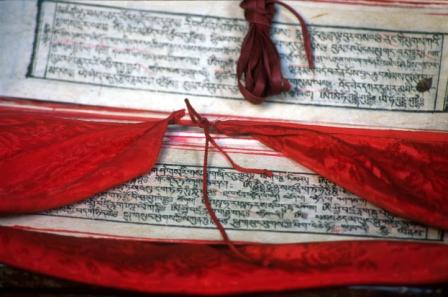 |
In Tibet, the Buddhist monasteries have traditionally been great centers of learning. Each of the monastic center of learning is divided into several monasteries composed of many schools. Each monastery has its own set of textbooks, but the education is uniform throughout.The education system followed in many of the monasteries of the Gelug tradition such as Ganden, Sera and Drepung is modeled on that introduced from India more than a thousand years ago.
Upon successful completion of the extensive studies, monksand nuns are awarded the geshe degree, for which they must be at least 25 years of age. Similar systems of study can be found in many monasteries and nunneries of the other Tibetan lineages of Buddhism as well, with slight variations in curriculum, degree requirements and titles conferred.
 |
The novices begin their formal studies after they have been taught toread and write. Very quickly they begin to memorize the major texts that will form the basis of their later studies. These texts have been translated from Sanskrit and only after they have been fully memorized will they be explained. Although in their classes the novices receive lectures, the main emphasis in the Gelug tradition is on debating. Having had a point explained to them, the students pair off to explore with each other its implications, defense and possible refutation. This ensures that they understand what they are taught and do not merely accept things as true without knowing why.
Extract from "Compendium of Knowledge" Akya Ying dzin Yangchen Gawai Lodroe

